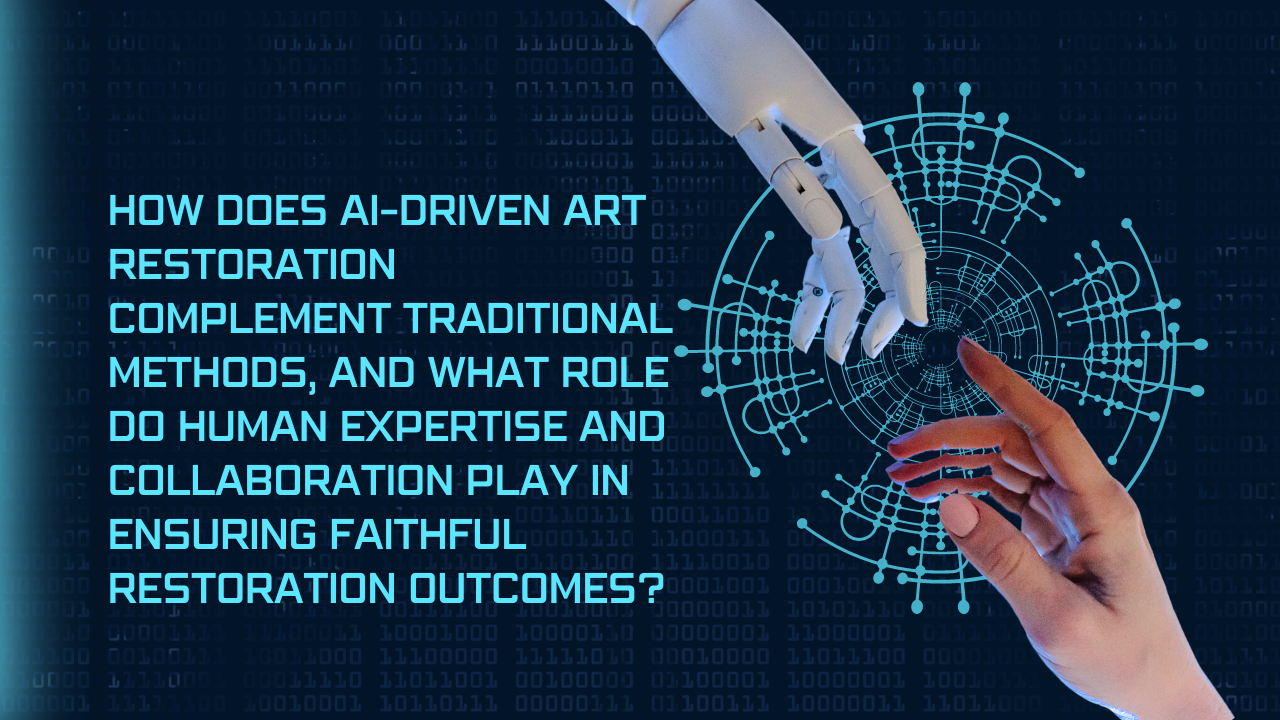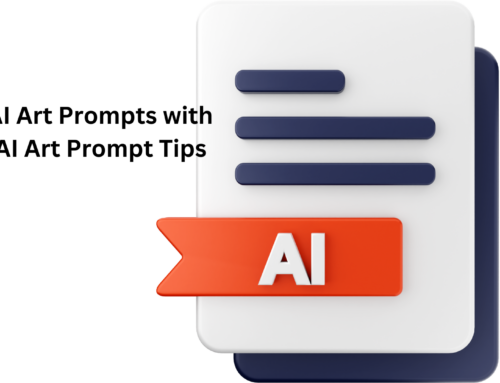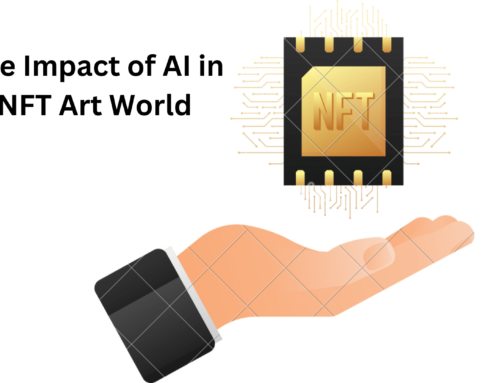Have you ever walked through a museum and marveled at the beauty of a centuries-old painting? There’s something captivating about these masterpieces, isn’t there? But as time passes, these works of art can fade, crack, or even be damaged by accidents. That’s where the incredible world of AI in art restoration comes into play!
Imagine a painting that’s lost some of its colors or has cracks running through it. Traditional restoration methods are effective but can be time-consuming and costly. However, with the power of Artificial Intelligence (AI), the restoration process has become faster, more accurate, and sometimes even miraculous!

Role of AI in Art Conservation
One of the most fascinating aspects of AI in art restoration is its ability to learn and improve over time. The more data it’s fed, the better it becomes at recognizing patterns and restoring artworks accurately. Using artificial intelligence to detect damage has profound implications for the art world, streamlining conservation efforts without the need for extensive physical work. This continuous learning process ensures that AI remains at the forefront of art restoration technology.
According to Shubham Singh, Content Marketer and UX Designer at demandsage.com acknowledges the transformative power of AI in art restoration. “As an expert in Artificial Intelligence and technology, I believe that AI art generation holds immense potential in the restoration of damaged artworks. AI algorithms have advanced to the point where they can accurately analyze and interpret visual data, making them invaluable tools in reconstructing missing pieces or faded details while preserving the artistic integrity of the original work. By leveraging machine learning techniques, AI can meticulously study the style, composition, and color palette of a damaged artwork, enabling it to generate realistic renderings of the missing elements.
Moreover, AI driven restoration techniques can significantly expedite the restoration process, allowing conservators and art experts to focus their efforts on more intricate aspects of the restoration. This streamlined approach not only saves time but also enhances the overall efficiency and precision of the restoration process. Additionally, AI algorithms can adapt and learn from each restoration project, continuously improving their accuracy and effectiveness over time.
However, it’s crucial to recognize that AI art generation should complement, rather than replace, traditional restoration methods. While AI can assist in reconstructing missing details, human expertise and intuition are still indispensable in ensuring that the restored artwork remains faithful to the original artist’s vision. Collaborative efforts between AI technologies and skilled conservators can ultimately result in more comprehensive and faithful restoration outcomes, preserving our cultural heritage for future generations to enjoy.”
The Debate on AI in Art Restoration
However, it’s important to note that not everyone shares this enthusiasm for AI in art restoration. Some critics argue that while AI algorithms can be effective in filling in missing details, they may lack the nuanced understanding and emotional connection to the artwork that human conservators possess. They caution against over-reliance on AI technology, suggesting that it could potentially diminish the authenticity and soul of the restored artwork.
James, a Real Estate Cash Buyer and owner of “Modern Property Solutions, offers a thought-provoking perspective on the use of AI in art restoration. “I disagree with this notion. When we consider using AI to restore damaged artworks, we tread on delicate ground, for altering them with AI could be perceived as an act of rewriting history or fabricating a past that never was. The brushstrokes, the mix of colors, the texture—all these elements are part of a narrative that tells us about the artist’s unique style, the available resources, and the prevailing artistic trends. AI, no matter how advanced, operates on algorithms that may not discern the subtleties of human creativity and the depth of historical significance. It might fill in gaps with what is statistically probable, rather than what is historically accurate or true to the artist’s vision. This could lead to a homogenization of art, where distinct styles and techniques are lost in favor of a more uniform, AI-generated approximation. Such a practice could distort our understanding of art history and diminish the individuality of artists’ contributions to our cultural heritage.”
Using advanced algorithms, AI can analyze digital images of damaged artworks and recreate missing or damaged parts. It’s like giving a painting a new lease on life! By understanding the patterns and colors of the original artwork, AI can seamlessly fill in the gaps, making the restoration process smoother than ever before.
According to Daisy Liang, the Sales Manager of KOYO Machinery, “Absolutely, AI art generation holds promise in art restoration by aiding in the reconstruction of damaged artworks. Leveraging sophisticated algorithms, it can meticulously recreate missing elements and revitalize faded details while respecting the original artistic essence. This fusion of technology and art conservation ensures preservation with integrity, offering a compelling solution for restoring cultural heritage.”
Cultural Heritage and Historical Preservation through AI in Art Restoration
Let’s dive into how AI is totally changing the game in art restoration and helping preserve our history and culture. Imagine a classic painting like Rembrandt’s “Night Watch.” Over the years, it might get a little worn out, right? Now, traditional methods of restoring such masterpieces could take ages and might not even get it just right. But with AI in the picture, things get a whole lot easier.
AI technology has this amazing power to analyze every tiny detail of a painting and figure out the best way to restore it. It’s like having a super-smart assistant for artists and conservators! With the application of AI, restoring artworks becomes not just accurate, but also way faster. Those missing pieces or faded brushstrokes? AI could help fill in those gaps like magic.
Think about it this way: AI is like a superhero for art preservation. It swoops in, uses its incredible AI systems to understand the painting’s needs, and voila! The artwork gets a new lease of life. And it’s not just about one painting; AI has the potential to transform the whole field of art conservation and restoration.
So, when we talk about the role of artificial intelligence in art, it’s not just about technology; it’s about preserving the stories and culture behind each piece. With AI regulation in place, we can make sure that this powerful tool is used responsibly to safeguard our artistic heritage for generations to come.
The Role of Artificial Intelligence and Machine Learning in Art Conservation
Alright, let’s break down how machine learning is helping out in conserving art. Imagine a painting by your favorite artist, say a classic like Rembrandt. Over time, these pieces can get worn out, damaged, or even fade. Now, enter AI and machine learning. These technologies are like the superheroes of the conservation process. They use fancy algorithms to analyze every stroke, every color, and every detail of the artwork.
By doing this, AI helps conservators make informed decisions about how to restore the piece. It’s like having a digital assistant that understands the intricate details of art, helping us preserve it for generations to come. AI doesn’t stop there. It can even mimic the style of Rembrandt himself, using its algorithms to enhance the accuracy of restoration.
So, what does this mean for the field of art restoration? Well, it’s a game-changer. AI and machine learning are revolutionizing the way we approach restoration projects. They’re not just tools; they’re partners for the art conservator. With their help, we can preserve and restore artworks with greater precision and efficiency than ever before. It’s like having a whole team of experts right at your fingertips, all thanks to the power of artificial intelligence in art restoration.
Challenges and Opportunities in AI-driven Art Preservation
Challenges:
AI in art restoration isn’t without its hurdles. For starters, while AI brings a lot to the table, it’s not infallible. Sometimes, AI models and neural networks can get things wrong or misinterpret data. This could spell trouble, risking potential damage to the original piece. Another concern is that relying too heavily on AI might strip away the human element. After all, art restoration isn’t just about fixing flaws; it’s about connecting with the spirit of the artwork and preserving its authenticity.
Opportunities:
But hey, it’s not all doom and gloom. AI in art restoration opens up some exciting possibilities. Think about it – it’s a game-changer in the realm of cultural heritage preservation. With AI’s help, we can spot damages that the naked eye might miss and even recreate missing parts of the original masterpiece. Armed with AI tools, we can transport ourselves back in time, envisioning how the artwork looked in its heyday. It’s all about contributing to the ongoing mission of safeguarding our cultural legacy.
In a nutshell, while there are certainly challenges, we can’t ignore the immense potential of AI in art restoration. By finding the sweet spot between harnessing AI’s strengths and respecting the importance of human expertise, we can revolutionize how we treat and preserve artworks. With thoughtful implementation, AI-driven art restoration has the power to deepen our understanding and admiration of art while ensuring its longevity for generations to come.
Ethical Considerations in AI-guided Art Restoration
When we talk about AI in art restoration, we’re diving into a pool of ethical dilemmas. Think about it: using data to learn from vast datasets sounds fancy, but what about authenticity? Can AI truly capture the essence of an artwork, or are we just playing with pixels? It’s like sending a neural network to art school – sure, it can learn the techniques, but can it understand the soul behind the strokes?
And then there’s the question of intervention limits. AI might be great at recreating lost elements, but should it? Where do we draw the line between preserving an artwork’s originality and enhancing its aesthetic appeal? It’s like trying to balance on a tightrope between tradition and innovation. We want to ensure that the legacy of the artwork is respected while still finding ways to breathe new life into it.
Ultimately, the way we preserve our heritage for future generations is at stake here. We’ve got to be mindful of the choices we make. It’s not just about making the artwork look pretty; it’s about ensuring that its story, its history, remains consistent with the original. After all, we’re not just dealing with paint and canvas; we’re dealing with the cultural legacy of our world.

Meet Airbrush AI
Have you ever wondered how ancient artworks are brought back to life with a modern touch? Well, let me introduce you to Airbrush AI, a fantastic text-to-image generator tool that’s making waves in the world of art restoration. It’s like a magic wand for reviving old paintings and preserving their beauty for generations to come. Here’s why it’s a game-changer:
- Time Saving: With Airbrush AI, the hours spent painstakingly restoring artwork manually are a thing of the past. It works in minutes, speeding up the restoration process significantly.
- Easy to Use: You don’t need to be an art expert to use Airbrush AI. Its user-friendly interface makes it accessible to everyone, from seasoned professionals to beginners.
- Free: Yes, you read that right! This incredible tool won’t cost you a penny. It’s freely available for anyone passionate about preserving art.
- Customizable Options: Whether you want to adjust colors, enhance details, or add artistic effects, Airbrush AI gives you full control over the restoration process. You can tailor the results to suit your preferences perfectly.
- Size Control: Whether you’re working on a small sketch or a massive mural, Airbrush AI handles it all with ease. Its size control feature ensures that your artwork looks flawless no matter the dimensions.
With Airbrush AI, the power of artificial intelligence is harnessed to revive and preserve art like never before. So why wait? Give your old masterpieces a new lease on life using this incredible tool!
Closing Remarks
In the end, AI in art restoration marks the dawn of a new era. It’s like having a magic wand that can bring damaged or deteriorated artworks back to their original glory. With AI’s help, we can combat issues like color fading and preserve vast collections of historical treasures for generations to come. But remember, with great power comes great responsibility. We must tread carefully, ensuring that while we enhance the beauty of art, we also respect its authenticity and legacy. So let’s embrace this exciting technology, but let’s also cherish the human touch that makes art truly timeless.







Leave A Comment